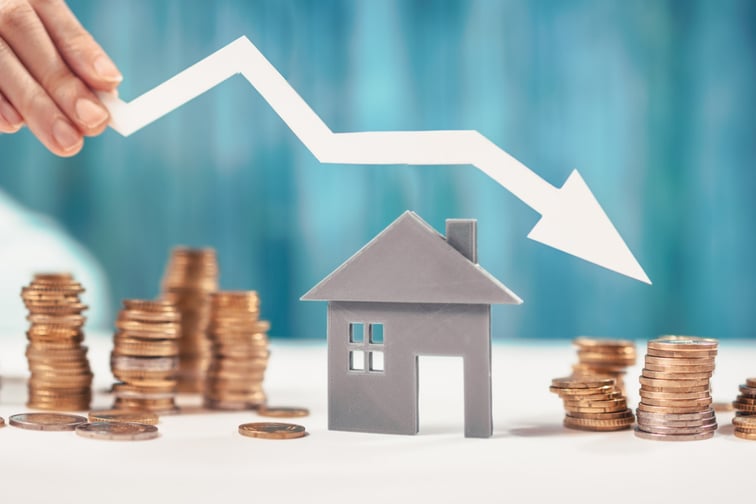

Australian housing markets continued to lose steam in May as a combination of higher interest rates, rising inventory levels, and lower sentiment dampened conditions, CoreLogic has reported.
CoreLogic’s Home Value Index (HVI) showed Sydney and Melbourne dwelling values posted the most significant declines month-on-month, at -1% and -0.7%, respectively; while Canberra recorded its first monthly fall since July 2019, at -0.1%.
Housing values continued to rise across the remaining capitals, but the growth was still not enough to make up for the depreciation in Sydney, Melbourne, and Canberra, dragging down the combined capitals index by -0.3% over the month.
Sydney housing values have progressively declined month-on-month since February, while Melbourne has fallen across four of the past six months.
Since peaking in January, Sydney housing values dropped -1.5%, but were 22.7% above pre-COVID levels. Melbourne, meanwhile, experienced a softer growth phase, recording a smaller peak-to-date decline of -0.8%, with housing values now up 9.8% compared to the pre-COVID level.
Canberra, Australia’s second most expensive property market behind Sydney, has had almost three years of consistent growth, but even with dwelling values up 2.2% in the three months to May, softer house values and affordability constraints are likely to have had an impact. The capital city’s housing values now sit 37.9% higher than pre-pandemic levels, accounting for the marginal decline evident in May, CoreLogic said.
Most markets outside of Sydney, Melbourne, and Canberra, had positive growth trends in May, albeit with less momentum. Perth and Adelaide were the exceptions, where the quarterly growth trend lifted in May, although both regions remained below the peak quarterly rate of growth, CoreLogic said.
Tim Lawless, CoreLogic’s research director, said the 0.5% lift in housing values across Australia’s combined regional areas was not enough to keep the national index in positive monthly territory, with the national HVI down -0.1% in May – the first monthly decline in the national index since September 2020.
“There’s been significant speculation around the impact of rising interest rates on the property market, and last month’s increase to the cash rate is only one factor causing growth in housing prices to slow or reverse,” Lawless said. “It is important to remember housing market conditions have been weakening over the past year, at least at a macro level.”
Lawless noted the quarterly rate of growth in national dwelling values peaked in May last year, following a peak in consumer sentiment and a trend towards higher fixed mortgage rates.
“Since then, housing has been getting more unaffordable, households have become increasingly sensitive to higher interest rates as debt levels increased, savings have reduced, and lending conditions have tightened,” he said. “Now we are also seeing high inflation and a higher cost of debt flowing through to less housing demand.”
